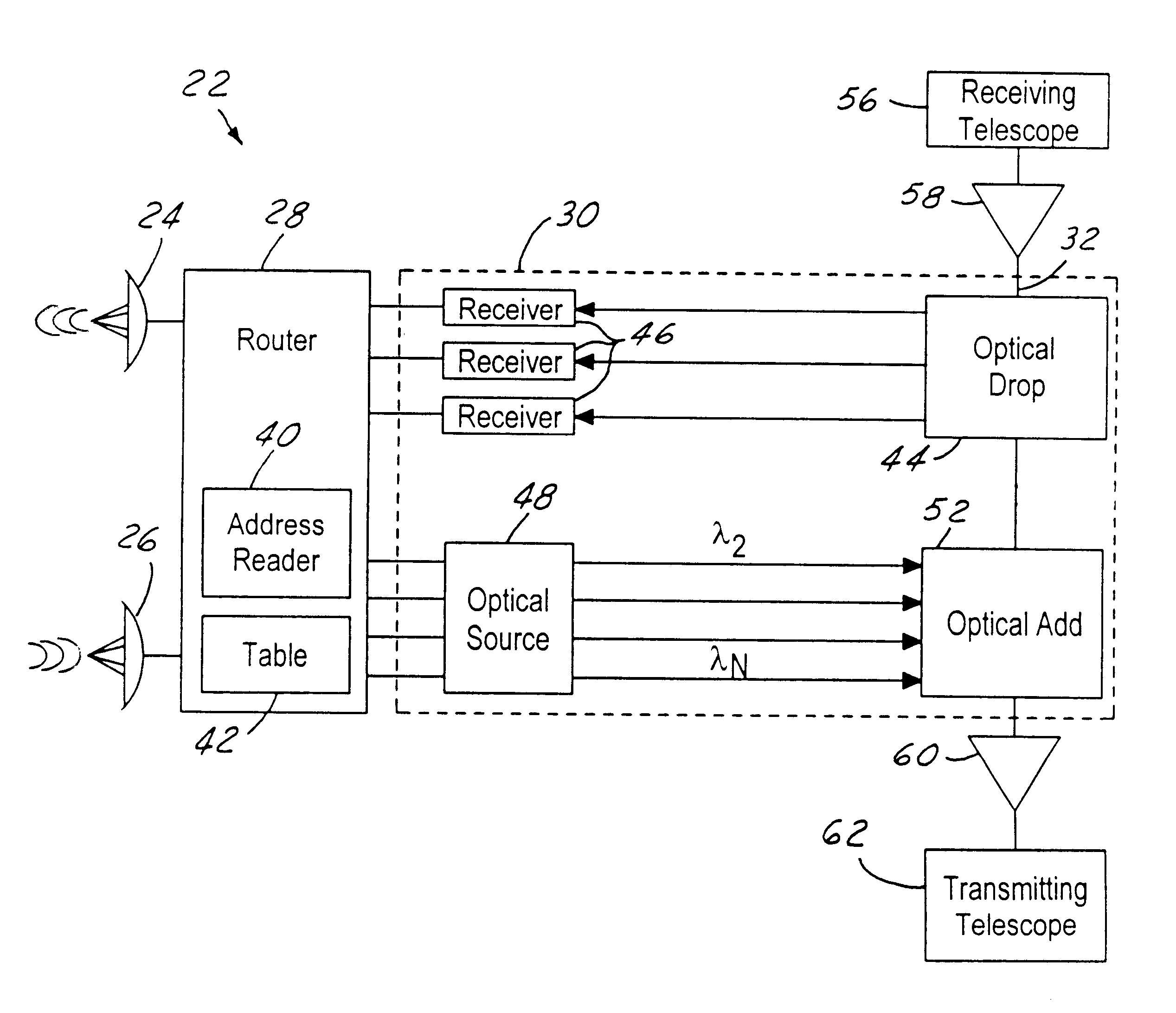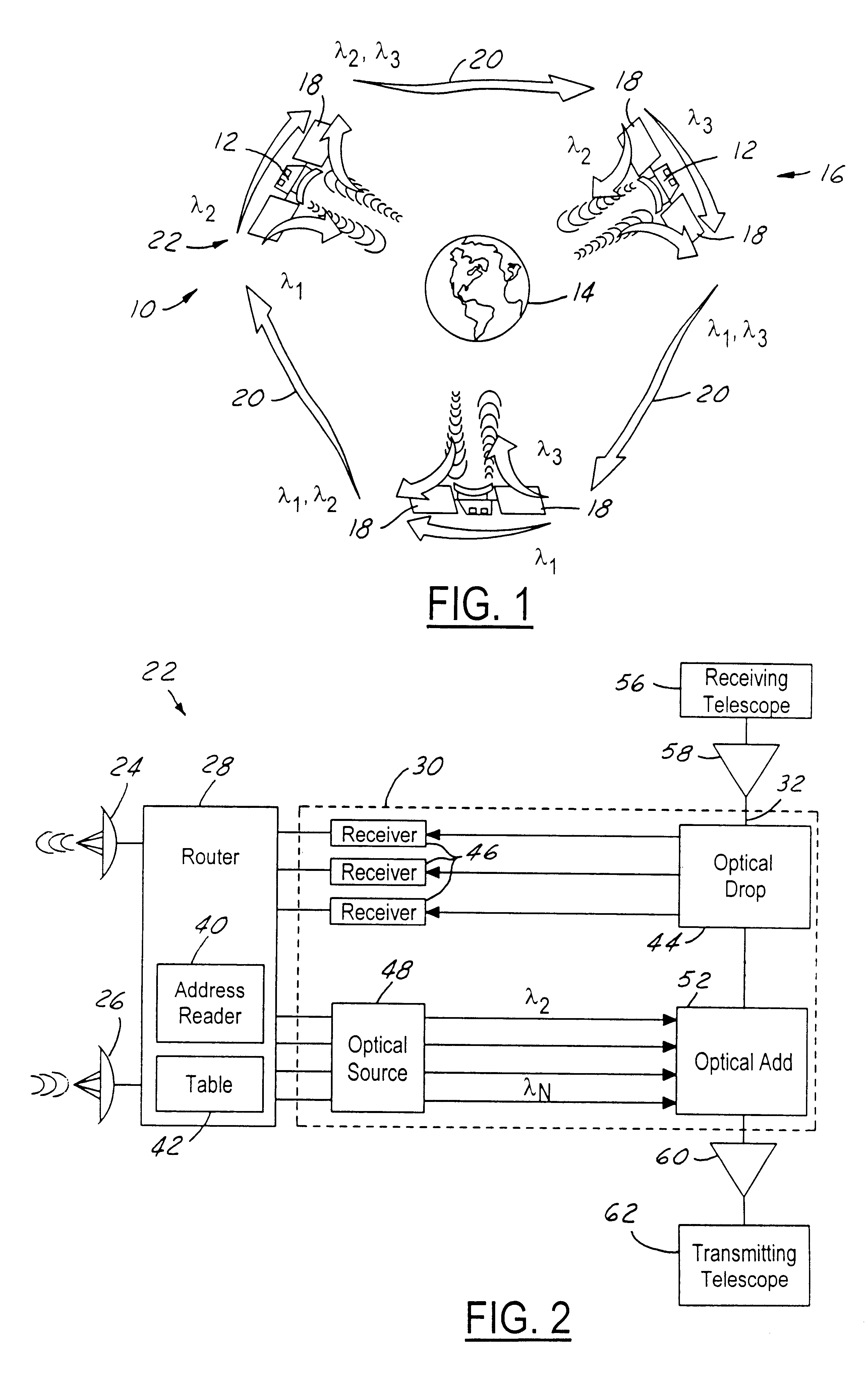Ring architecture for an optical satellite communication network with passive optical routing
a satellite communication network and optical satellite technology, applied in the field of space and communications satellites, can solve the problems of increasing the scarce remaining slots, consuming a significant amount of electric power for high-speed switching electronics, and limited growth to higher frequencies, so as to reduce power consumption and weight, and increase network capacity
- Summary
- Abstract
- Description
- Claims
- Application Information
AI Technical Summary
Benefits of technology
Problems solved by technology
Method used
Image
Examples
Embodiment Construction
[0016]Referring now to FIG. 1, a communication system 10 is comprised of a plurality of satellites 12 orbiting the earth. Satellites 12 may be in geosynchronous orbit (GSO), medium earth orbit (MEO) and low earth orbit (LEO) around earth 14. Although this invention may be used for other types of orbits, this invention is particularly suitable for satellites in GSO.
[0017]Satellites 12 form a network 16. Each satellite 12 receives and transmits radio frequency (RF) communications to earth by way of antennas 18. As will be further described below, each satellite 12 communicates with an adjacent satellite in network 16 using optical signals. Because the satellites are spaced apart with respect to the earth and, if satellites 12 are in LEO or MEO, the relative position of satellites 12 with respect to the earth is changing. At any particular time, one or more satellites may be in view of the earth at a suitable elevation angle. As will be further described below, communications desired f...
PUM
 Login to View More
Login to View More Abstract
Description
Claims
Application Information
 Login to View More
Login to View More - R&D
- Intellectual Property
- Life Sciences
- Materials
- Tech Scout
- Unparalleled Data Quality
- Higher Quality Content
- 60% Fewer Hallucinations
Browse by: Latest US Patents, China's latest patents, Technical Efficacy Thesaurus, Application Domain, Technology Topic, Popular Technical Reports.
© 2025 PatSnap. All rights reserved.Legal|Privacy policy|Modern Slavery Act Transparency Statement|Sitemap|About US| Contact US: help@patsnap.com


